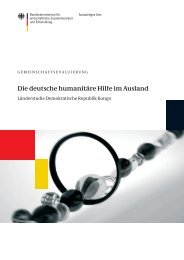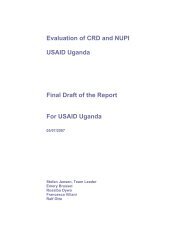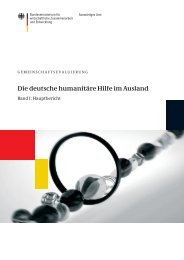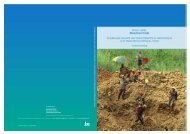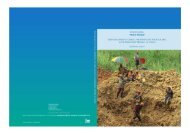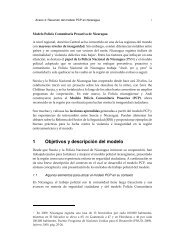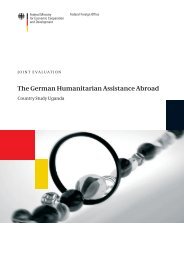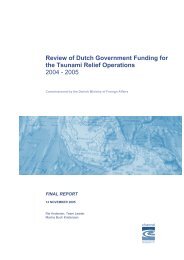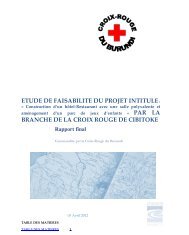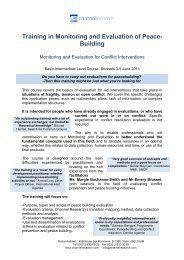A ripple in development? - Channel Research
A ripple in development? - Channel Research
A ripple in development? - Channel Research
Create successful ePaper yourself
Turn your PDF publications into a flip-book with our unique Google optimized e-Paper software.
livelihoods. Consequently, access to these available resources by these<br />
households should result <strong>in</strong> less poverty. For example, if a district<br />
received fund<strong>in</strong>g under the category of credit and loans for small and<br />
medium enterprise <strong>development</strong>, households <strong>in</strong> that district could adjust<br />
their <strong>in</strong>come generat<strong>in</strong>g activities to directly/<strong>in</strong>directly take advantage<br />
of this new <strong>in</strong>jection of resources.<br />
As such, this analytical approach attempts to match external aid to<br />
what households report about their <strong>in</strong>come generat<strong>in</strong>g activities. This<br />
match<strong>in</strong>g approach is justified on the grounds that <strong>in</strong>itially <strong>in</strong> both Aceh<br />
and Sri Lanka, humanitarian access to the conflict affected areas which<br />
also suffered damage from the tsunami was limited. Aid was specifically<br />
regulated and targeted to tsunami affected, but non-conflict affected<br />
areas only.<br />
After try<strong>in</strong>g to match aid flows by geographical areas and types and<br />
extent of livelihood activities, what cannot be directly attributed to<br />
<strong>in</strong>ternational aid actors would then be related to (i) the affected population’s<br />
own efforts (ii) market mechanisms (iii) central and local government<br />
efforts.<br />
3.2 Target<strong>in</strong>g of aid on poverty <strong>in</strong> Aceh and Nias<br />
Statistical evidence leads one to conclude that the effects of aid assistance<br />
on poverty levels have by and large been positive as is evident from<br />
the table below, where there are fewer poor households <strong>in</strong> 2005 (after<br />
the tsunami) compared to 2004 (before the tsunami). This data comes<br />
from the Indonesian Census Bureau (Badan Pusat Statistik) and World<br />
Bank. This is especially the case <strong>in</strong> rural areas. The positive effects of<br />
aid is based on the assumption that dur<strong>in</strong>g the three decades of conflict,<br />
the economy <strong>in</strong> Aceh Prov<strong>in</strong>ce was close to be<strong>in</strong>g halted, and after the<br />
tsunami <strong>in</strong>jections of f<strong>in</strong>ancial aid contributed to poverty reduction.<br />
Table 2<br />
Percentage of Poor Households <strong>in</strong> Aceh Prov<strong>in</strong>ce 2004–2006<br />
2004 2005 2006<br />
% % %<br />
Aceh Prov<strong>in</strong>ce 28.4 32.6 26.5<br />
Urban 17.6 20.4 14.7<br />
Rural 32.6 36.2 30.1<br />
Indonesia 16.7 16.0 17.8<br />
Source: BPS data and World Bank staff calculations.<br />
It is not clear whether these poor households became poor temporarily<br />
because of the damage caused by the tsunami or because they were<br />
already the long term poor affected by the conflict.<br />
54



